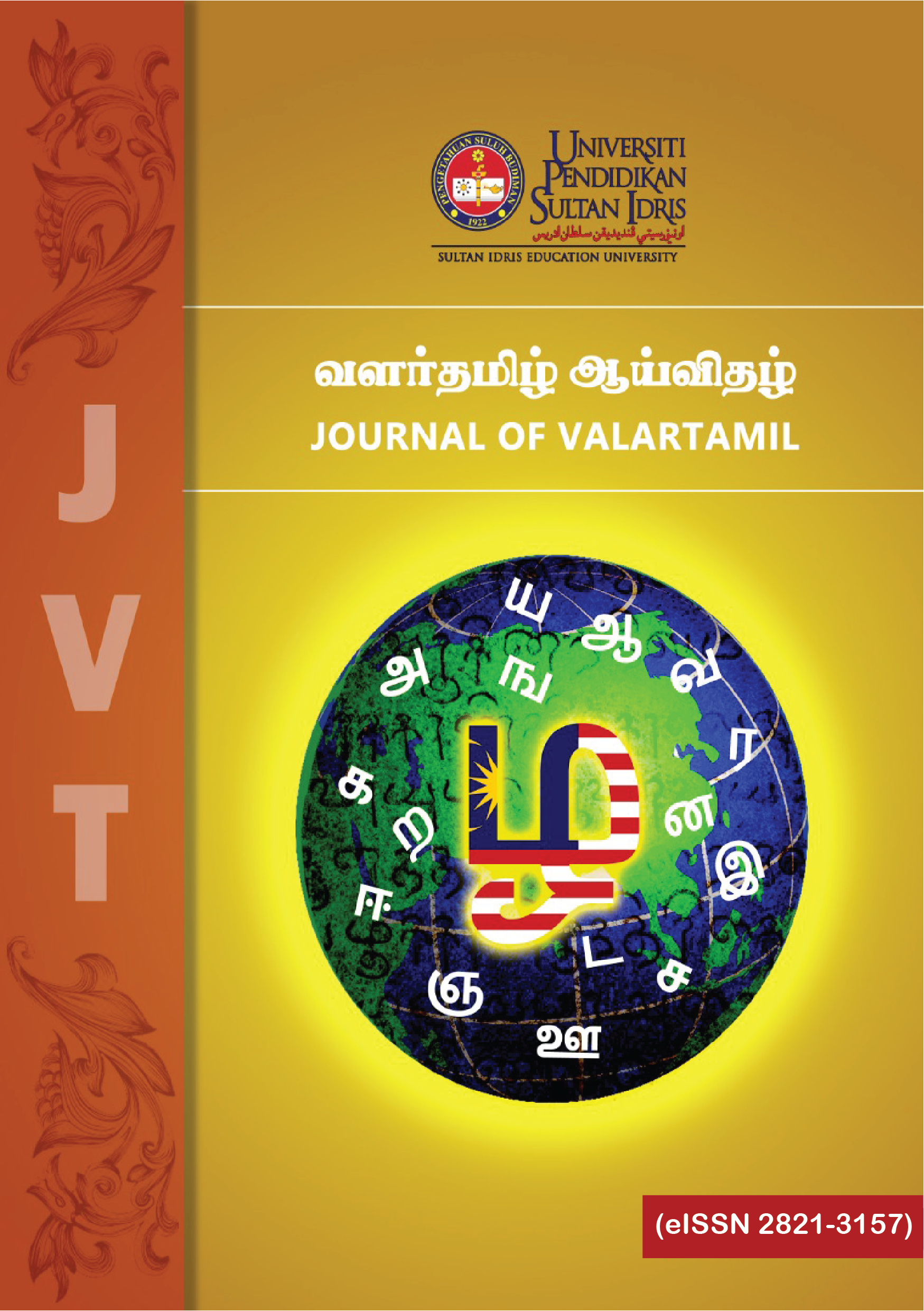தமிழகத்தில் தேவரடியார் முறை
Devaradiyar system in Tamil Nadu
DOI:
https://doi.org/10.37134/jov.vol1.2.4.2020Keywords:
கோயில்கள், கலைப் புரவலர்கள், பொட்டுக் கட்டுதல், தலைக் கோலி, தானங்கள், வீழ்ச்சிAbstract
தேவரடியார் முறை இடைக்காலத் தமிழகத்தில் பரவலாகப் பின்பற்றப்பட்ட முறையாகும். இவ்வகையான மகளிர் சைவ, வைணவ ஆலயங்களில் இறைப்பணிக்காகத் தம்மை அர்ப்பணித்தவராவர். கோயில்களிலும் மடங்களிலும் சேவை செய்த தேவரடியார்களைப் பற்றிய செய்திகளைக் கல்வெட்டுகள் எடுத்துரைக்கின்றன. அவர்கள் கலைகளின் இருப்பிடங்களாகத் திகழ்ந்தனர். அவர்கள் கோயில்களுக்குத் தம்மை அர்ப்பணிக்கும் நிகழ்வு “பொட்டுக் கட்டுதல்” என்று பெயர். அவர்களுக்குத் “தலைக் கோலி” என்ற பட்டமும் வழங்கப்பட்டது. தேவரடியார்கள் பல்வேறு தானங்களை வழங்கிச் சமூகத்தில் சிறப்புப் பெற்றனர். ஆனால் காலப்போக்கில் அவர்கள் வீழ்ச்சியைச் சந்தித்து “தேவதாசிகள்”, “தாசிகள்” என்ற பெயரில் துயர வாழ்வு வாழ்ந்து மறைந்தனர்.Abstract:
Devaradiyar system was a practise which was followed during the mediaeval period of Tamil Nadu. They were the women whom dedicated their life for Siva and Vaishnava temples. Number of devaradiyars were served in the temples which was exposed by the inscriptions. They were skilled in art such like Dance, Music and Drama and developed it for centuries. Some women married and some other unmarried and they followed the practise “Pottu Kattuthal”. The Tamil kings honoured them by giving the title of “Thalaikkoli”. Devaradiyars gave huge donations to the temples and served for welfare of the society. They also availed more privileges at that time. But course of time due to various problems and downfalls they lost their honour and struggled for their livelihood. In course of time they were called as “Devadasis” and “Dasis”. Raise and fall of Devaradiyar system has been considered as notable event in the social history of the Tamils.
KeyWords: Temples, Art, Pottu Kttuthal, Thalaikkoli, Donations, Downfall, Devadasis
Downloads
References
Pillai.K.K, (2013). History of Tamil Nadu- People and Culture, Chennai, International Institute of Tamil Research
Swaminathan.A, (1991). Social and Cultural History of Tamil Nadu, Chennai: Deepa Publications
Neelakanta Sastri.K.A, (1935). The Cholas, Chennai: University of Madras
Neelakanta Sastri.K.A, (2001). Foreign Notices of South India, Chennai: University of Madras
Pulavar Nadarajan, (2014). Thirugnanasambandar Thevaram, Chennai: Uma Publications
Pulavar Nadarajan, (2016). Thirunavukkarasar Thevaram, Chennai: Uma Publications
Thiruvengada Ramanujadesan, (2014). Periyazhvar Thiruppallandu, Chennai: Uma Publications
Kumarasami Avadahani, (1936). Deivasilayar Virali Vidu Thoothu, Chennai: B.N.J.Educational Printers
Maduraik Kanchi, (2007). Chennai: New Century Book House (Pvt) Limited Company
Pattinappalai, (2007). Chennai: New Century Book House (Pvt) Limited Company
Raman.K.V, (1977). History of Pandiyas, Chennai: Tamil Nadu Text Book Society
Sathasiva Pandarathar.T.V, (1972). History of Pandiyas, Chennai: Thirunelveli Saiva Siddhantha Noorpathippu Kazhagam.Ltd
Balasubramanyam.M, (1978). Political and Cultural History of Cholas Chennai: Tamil Nadu Text Book Society
History of Tamil Nadu-Sangam Age, (1983). Chennai: Tamil Nadu Text Book Society





